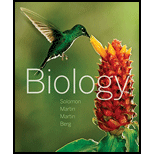
Concept explainers
Test Your Understanding
Know and Comprehend
1. Seed plants lack which of the following structure(s)? (a) ovules surrounded by integuments (b) microspores and megaspores (c) vascular tissues (d) a large, nutritionally independent sporophyte (e) a large, nutritionally independent gametophyte
Introduction: Seed is a part of plant, which contains an embryo that will give rise to a new plant, stores food material in the form of “endosperm” for the growth of embryo, and seed coat for the protection of seed.
Answer to Problem 1TYU
Correct answer: Seed plants does not possess a “large, nutritionally independent gametophytic” structure. Hence, the correct answer is option (e).
Explanation of Solution
Reason for the correct answer:
Seeds are present inside the ovary, which is known as female gametophyte. The function of female gametophyte is to provide nutrition to a number of ovules that requires a large amount of nutrition. Gametophytes are microscopic in size and have endosperm in it as a reserve food material for the development of plant when the seed is set for the process of germination. Thus, if a nutritionally independent gametophyte is present then the development of the ovules will not be possible, which will result in the deterioration of ovules.
Option (e) is given as “a large, nutritionally independent gametophyte”.
A seed plant does not have a nutritionally independent gametophyte because the gametophyte depends upon the sporophyte for the nutrition. Hence, the correct answer is option (e).
Reasons for the incorrect answers:
Option (a) is given as “ovules surrounded by integuments”.
Seed plants produce ovules which are surrounded by the integuments. Later on, those integuments will result in the formation of seed coat and serve as a protective covering of the seed. Hence, option (a) is incorrect.
Option (b) is given as “microspores and megaspores”.
Seed plants produce both kinds of spores such as microspores (male gamete) and megaspores (female gamete). The condition of producing both types of spores is known as heterospory. Hence, option (b) is incorrect.
Option (c) is given as “vascular tissues”.
Plant body uses vascular tissues for the transport of food materials and water for the proper growth of plant body. Thus, vascular tissues are present in seed plants. Hence, option (c) is incorrect.
Option (d) is given as “a large, nutritionally independent sporophyte”.
Most of the seed plants have a large, nutritionally independent sporophyte. Hence, option (d) is incorrect.
Hence, options (a), (b), (c), and (d) are incorrect.
Nutritionally independent gametophyte is not present in seed plants.
Want to see more full solutions like this?
Chapter 28 Solutions
Biology (MindTap Course List)
- Noggin mutation: The mouse, one of the phenotypic consequences of Noggin mutationis mispatterning of the spinal cord, in the posterior region of the mouse embryo, suchthat in the hindlimb region the more ventral fates are lost, and the dorsal Pax3 domain isexpanded. (this experiment is not in the lectures).a. Hypothesis for why: What would be your hypothesis for why the ventral fatesare lost and dorsal fates expanded? Include in your answer the words notochord,BMP, SHH and either (or both of) surface ectoderm or lateral plate mesodermarrow_forwardNot part of a graded assignment, from a past midtermarrow_forwardNot part of a graded assignment, from a past midtermarrow_forward
- please helparrow_forwardWhat does the heavy dark line along collecting duct tell us about water reabsorption in this individual at this time? What does the heavy dark line along collecting duct tell us about ADH secretion in this individual at this time?arrow_forwardBiology grade 10 study guidearrow_forward
 Biology (MindTap Course List)BiologyISBN:9781337392938Author:Eldra Solomon, Charles Martin, Diana W. Martin, Linda R. BergPublisher:Cengage Learning
Biology (MindTap Course List)BiologyISBN:9781337392938Author:Eldra Solomon, Charles Martin, Diana W. Martin, Linda R. BergPublisher:Cengage Learning Biology: The Dynamic Science (MindTap Course List)BiologyISBN:9781305389892Author:Peter J. Russell, Paul E. Hertz, Beverly McMillanPublisher:Cengage Learning
Biology: The Dynamic Science (MindTap Course List)BiologyISBN:9781305389892Author:Peter J. Russell, Paul E. Hertz, Beverly McMillanPublisher:Cengage Learning Biology: The Unity and Diversity of Life (MindTap...BiologyISBN:9781305073951Author:Cecie Starr, Ralph Taggart, Christine Evers, Lisa StarrPublisher:Cengage Learning
Biology: The Unity and Diversity of Life (MindTap...BiologyISBN:9781305073951Author:Cecie Starr, Ralph Taggart, Christine Evers, Lisa StarrPublisher:Cengage Learning Biology Today and Tomorrow without Physiology (Mi...BiologyISBN:9781305117396Author:Cecie Starr, Christine Evers, Lisa StarrPublisher:Cengage Learning
Biology Today and Tomorrow without Physiology (Mi...BiologyISBN:9781305117396Author:Cecie Starr, Christine Evers, Lisa StarrPublisher:Cengage Learning Biology 2eBiologyISBN:9781947172517Author:Matthew Douglas, Jung Choi, Mary Ann ClarkPublisher:OpenStax
Biology 2eBiologyISBN:9781947172517Author:Matthew Douglas, Jung Choi, Mary Ann ClarkPublisher:OpenStax Biology: The Unity and Diversity of Life (MindTap...BiologyISBN:9781337408332Author:Cecie Starr, Ralph Taggart, Christine Evers, Lisa StarrPublisher:Cengage Learning
Biology: The Unity and Diversity of Life (MindTap...BiologyISBN:9781337408332Author:Cecie Starr, Ralph Taggart, Christine Evers, Lisa StarrPublisher:Cengage Learning





